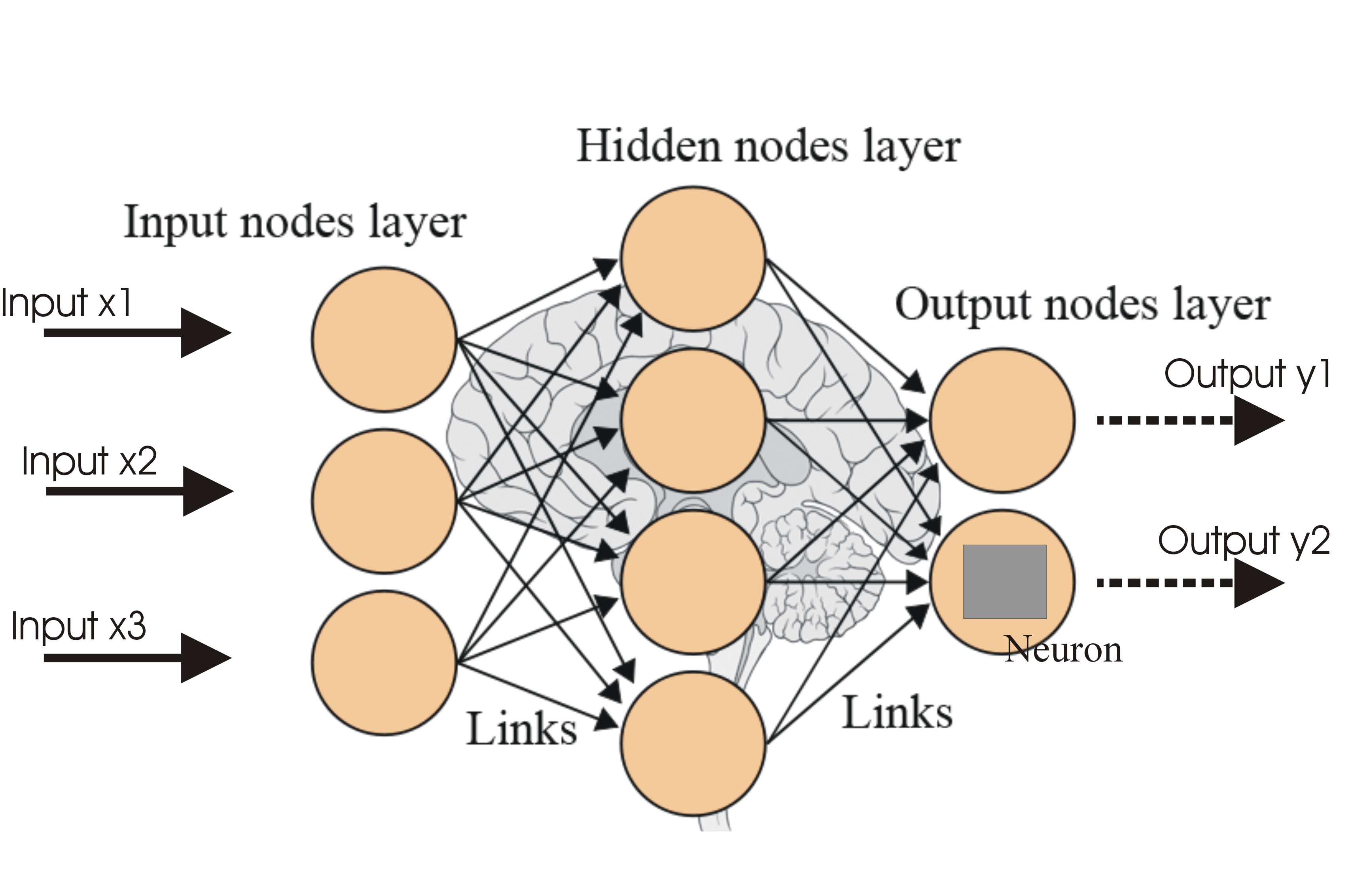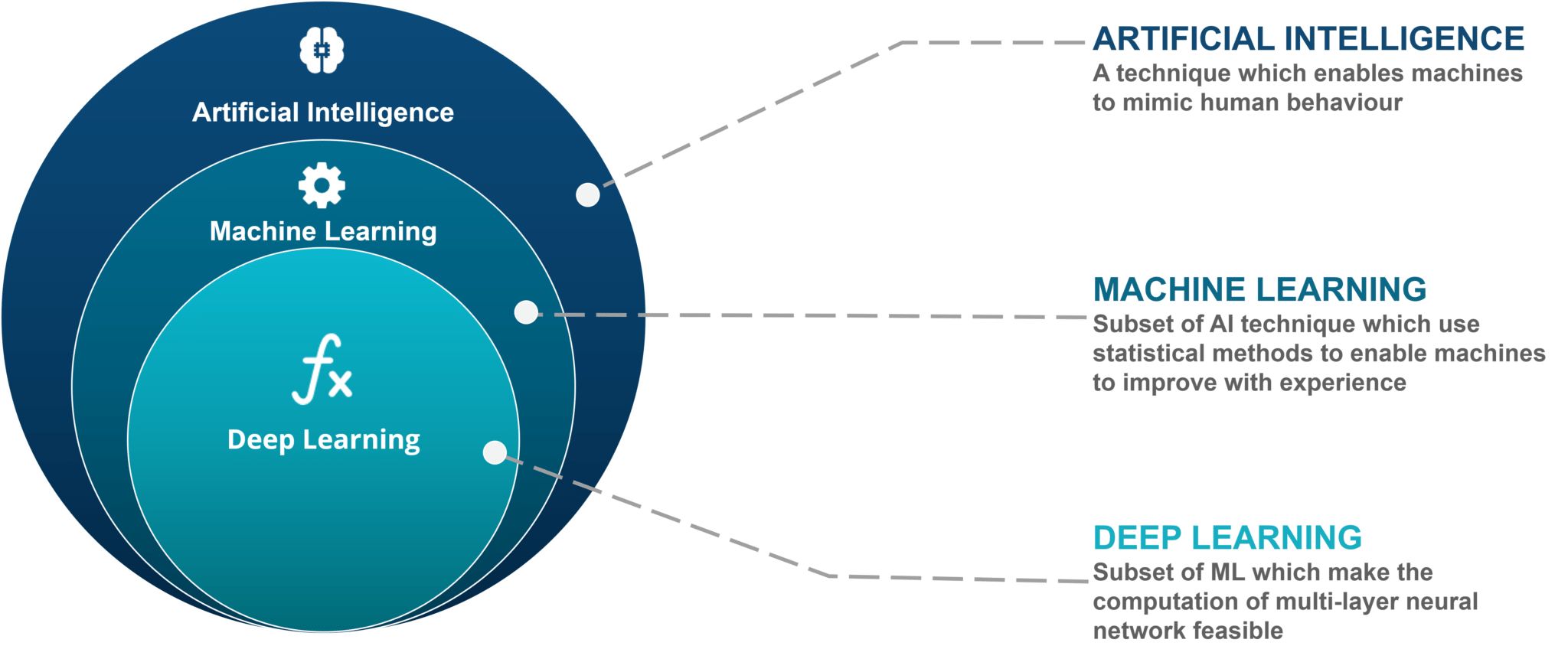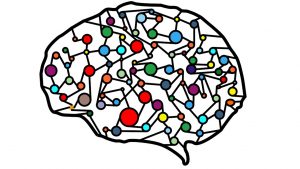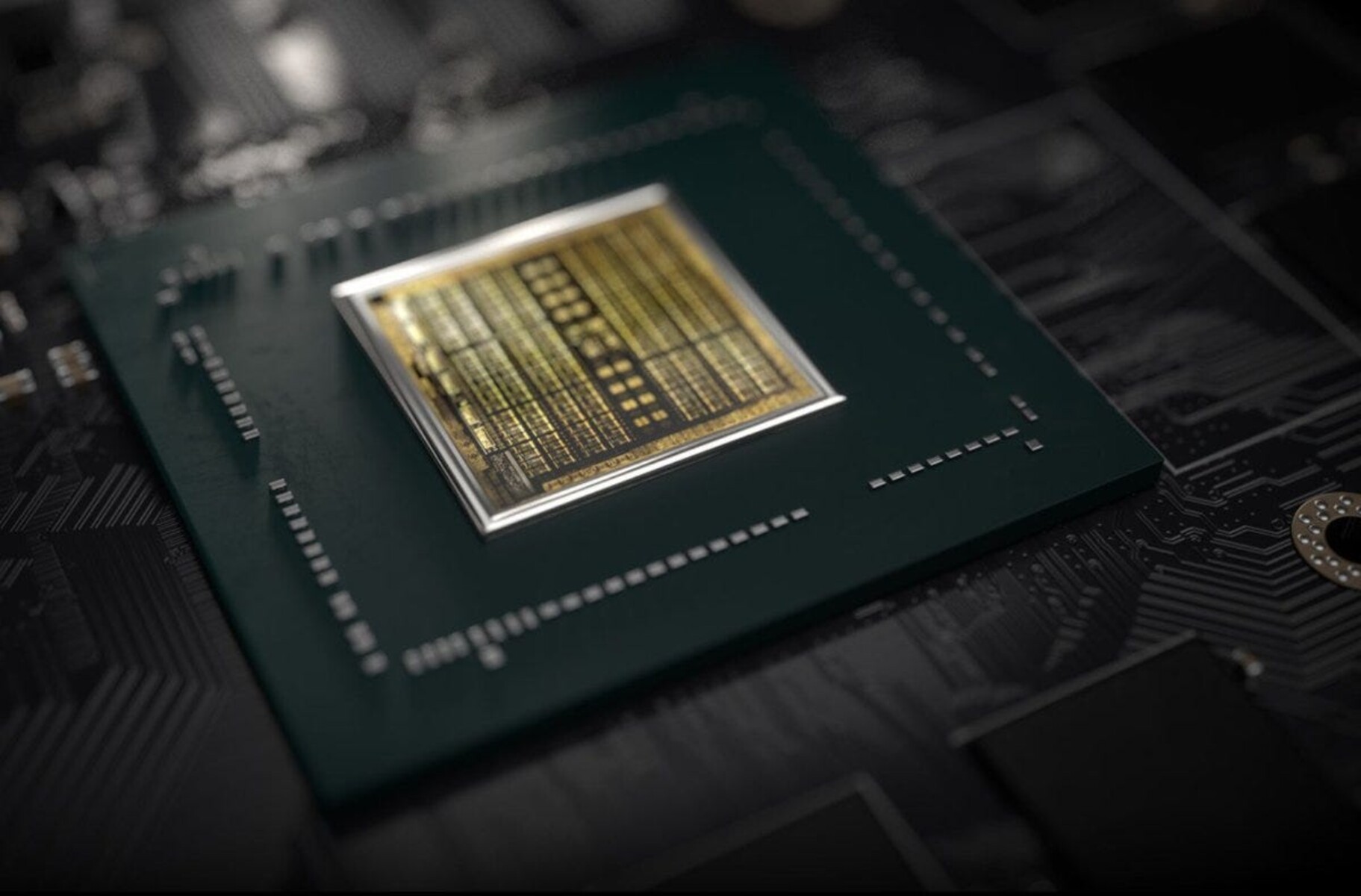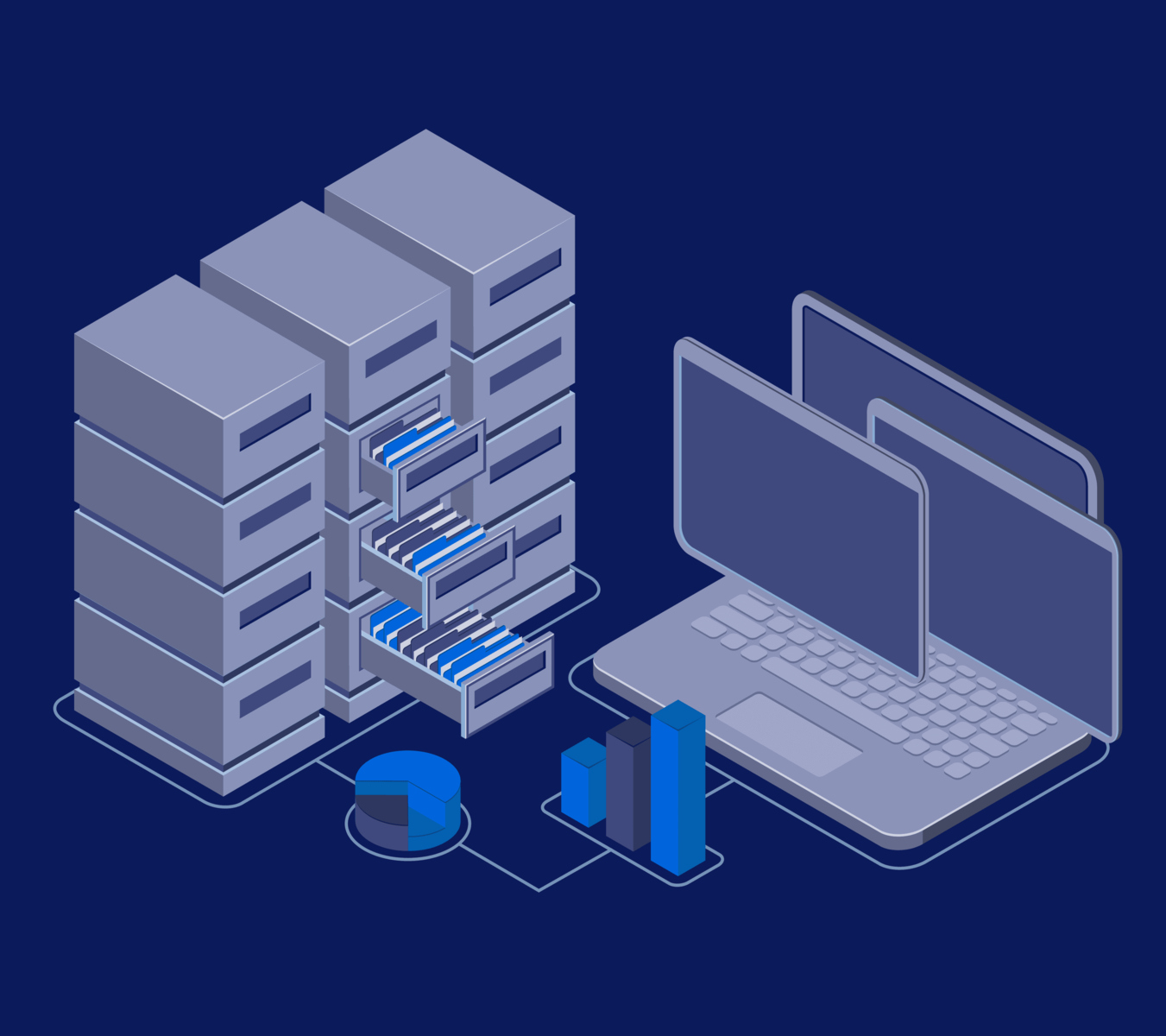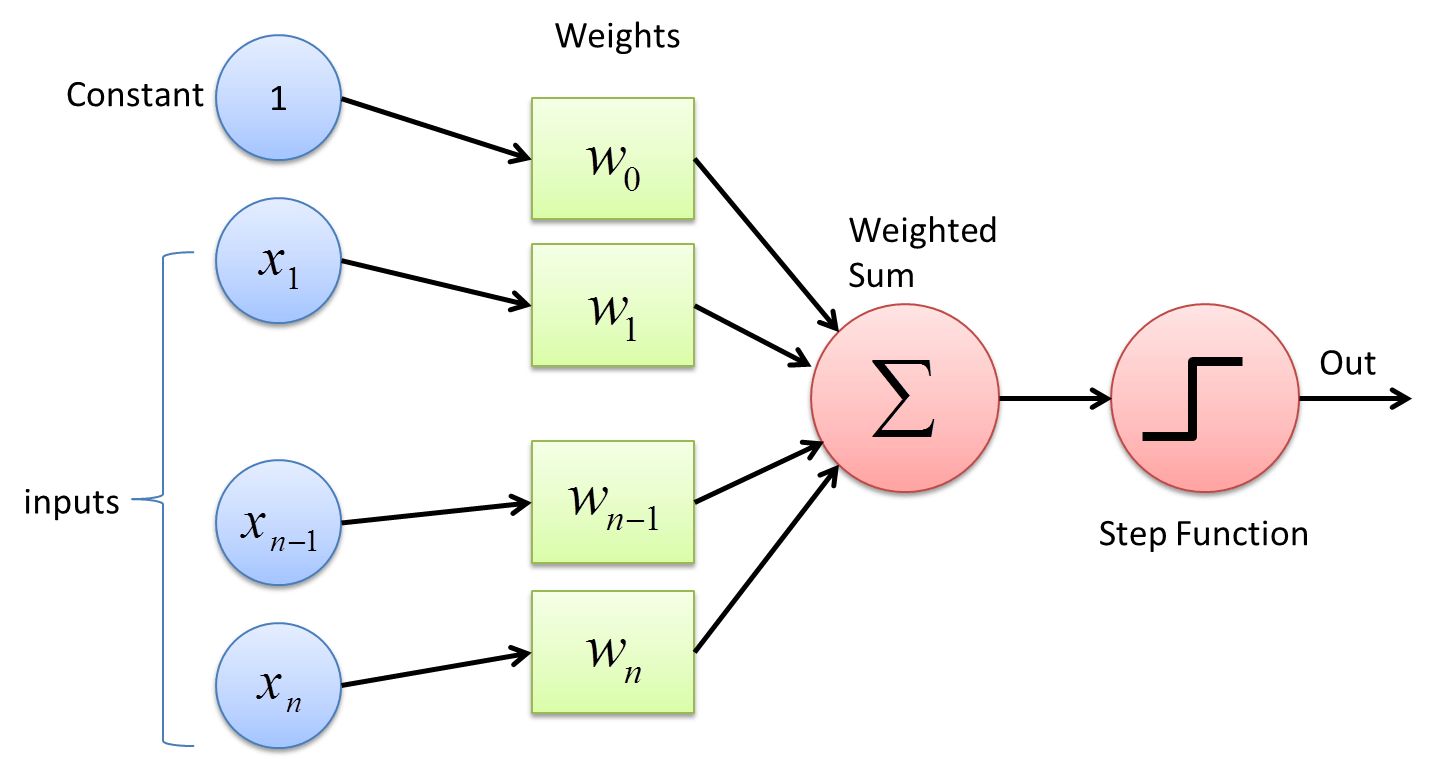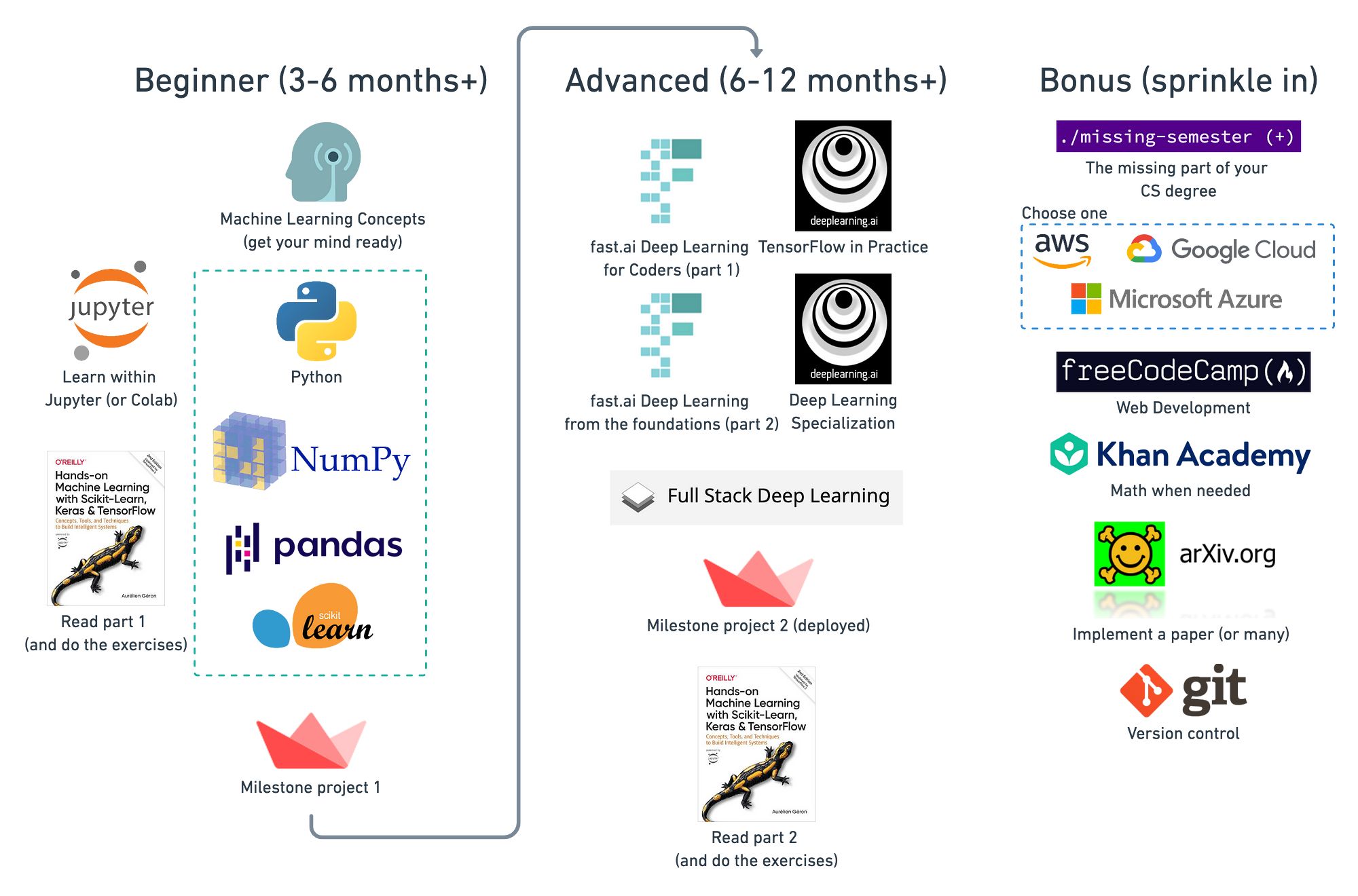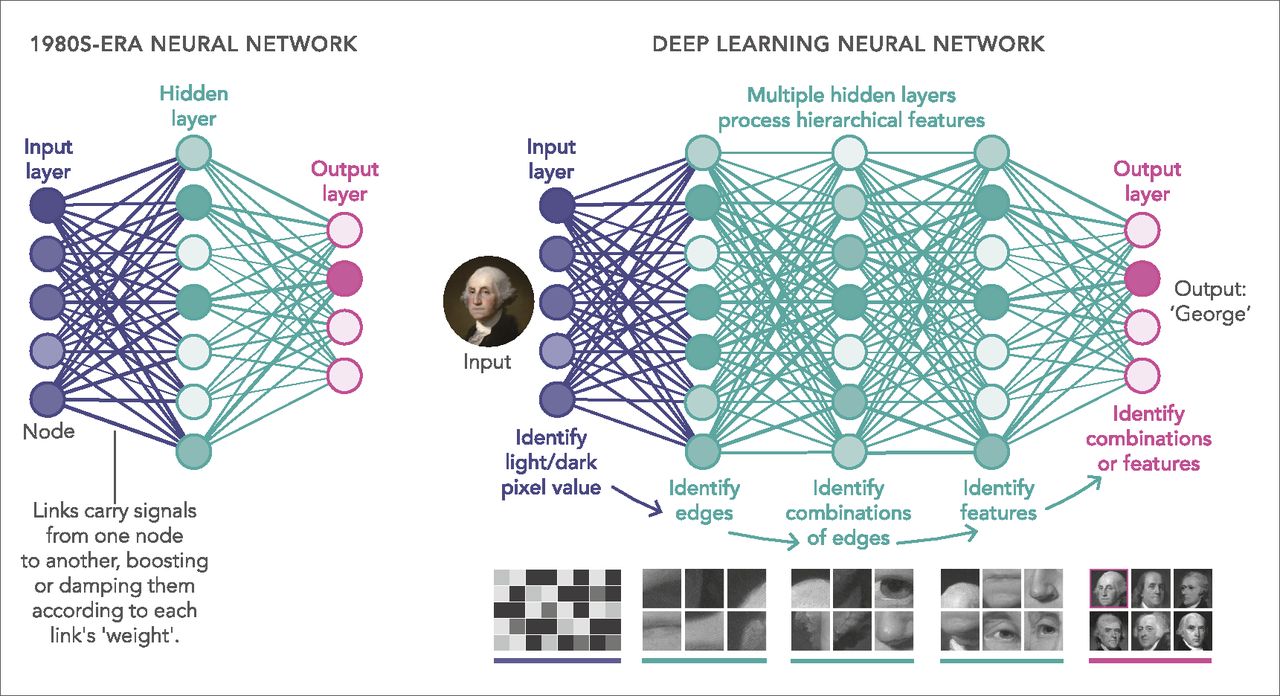Introduction
Welcome to the world of machine learning, a rapidly evolving field that has revolutionized various industries and the way we interact with technology. At the heart of machine learning algorithms lies the concept of neural networks, powerful models inspired by the human brain. In this article, we will explore what neural networks are, why they are essential in machine learning, how they work, and their applications in various domains.
Machine learning refers to the ability of computer systems to learn and improve from experience without being explicitly programmed. It enables computers to automatically analyze data, identify patterns, and make intelligent decisions. Over the past decade, machine learning techniques have gained immense popularity due to their effectiveness in solving complex problems and extracting meaningful insights from large datasets.
Neural networks, also known as artificial neural networks, are a fundamental part of machine learning. They are designed to mimic the structure and functionality of the human brain, allowing computers to process information in a similar way to how humans do. Neural networks are composed of interconnected nodes, called artificial neurons or simply “neurons,” which work together to perform intricate computations.
Neural networks have gained significant prominence in machine learning because of their remarkable ability to learn from data. They excel at tasks such as image recognition, natural language processing, time series analysis, and more. By leveraging the power of neural networks, machine learning algorithms can classify objects, predict future outcomes, generate creative content, and even outperform humans in certain domains.
In this article, we will delve deeper into the workings of neural networks, the different types of neural networks, and the applications of neural networks across various industries. We will also explore the advantages and disadvantages of using neural networks in machine learning. Brace yourself for an exciting journey into the fascinating world of neural networks.
Overview of Machine Learning
Machine learning is a rapidly growing field of study that focuses on developing algorithms and models that enable computers to learn and improve from experience without being explicitly programmed. It is a subfield of artificial intelligence (AI) that aims to enable computers to perform tasks without being explicitly programmed.
The key concept behind machine learning is that instead of explicitly programming computers to perform specific tasks, we provide them with data and allow them to learn patterns and make predictions or decisions based on that data. This data-driven approach allows machines to generalize from examples and make accurate predictions on new, unseen data.
There are different types of machine learning algorithms, including supervised learning, unsupervised learning, and reinforcement learning. In supervised learning, the algorithm is trained on labeled data, where it learns the relationship between input data and their corresponding output labels. This allows the algorithm to make predictions or classify new, unseen data based on the patterns it has learned.
Unsupervised learning, on the other hand, deals with unlabeled data. The algorithm learns patterns and relationships in the data without any predefined labels or target outputs. It is used for tasks such as clustering, where the algorithm groups similar data points together based on their inherent similarities.
Reinforcement learning is a branch of machine learning that involves an agent interacting with an environment to maximize a reward signal. The agent learns by taking actions and receiving feedback from the environment in the form of rewards or penalties. Through trial and error, the agent learns to make decisions that lead to the highest possible reward.
Machine learning has a wide range of applications across various industries. In the healthcare sector, machine learning algorithms can aid in disease diagnosis, treatment planning, and drug discovery. In finance, they can be used for fraud detection, risk assessment, and algorithmic trading. In e-commerce, machine learning algorithms can analyze customer behavior to provide personalized recommendations.
The field of machine learning is constantly evolving, with researchers and practitioners pushing the boundaries of what is possible. As more data becomes available and computational power increases, machine learning is set to play an even larger role in shaping the way we interact with technology and solve complex problems.
What Are Neural Networks?
Neural networks, also known as artificial neural networks, are computational models inspired by the structure and functionality of the human brain. They are a fundamental part of machine learning and have revolutionized various industries with their ability to learn patterns and make intelligent decisions.
At its core, a neural network is composed of interconnected nodes, called artificial neurons or simply “neurons.” These neurons work together in layers to process and analyze data, allowing the neural network to make predictions or classifications based on the patterns it has learned.
The structure of a neural network consists of an input layer, one or more hidden layers, and an output layer. The input layer receives the raw data, which could be numerical values, images, or text. The hidden layers perform computations by passing signals between the neurons, and the output layer produces the final result or prediction.
Neurons in a neural network are connected through weighted connections, which determine the strength of the signal being passed from one neuron to another. These weights are adjusted during the training process, allowing the neural network to learn the optimal values for making accurate predictions.
During the training phase, the neural network is presented with a set of labeled examples, called the training data. By comparing its predictions with the known labels, the neural network adjusts its weights using a process called backpropagation. This iterative process continues until the neural network achieves a satisfactory level of accuracy on the training data.
One of the key advantages of neural networks is their ability to learn hierarchical representations of data. This means that they can automatically learn complex features and patterns from raw data, without the need for manual feature engineering. This makes neural networks well-suited for tasks such as image recognition, natural language processing, and speech recognition.
Neural networks also exhibit a degree of robustness and fault tolerance. Even if some neurons or connections are damaged or missing, the neural network can often still produce accurate results by leveraging the redundancy inherent in its structure.
In summary, neural networks are computational models that mimic the structure and functionality of the human brain. By processing data through interconnected artificial neurons, they can learn patterns and make predictions or classifications. With their ability to learn hierarchical representations and exhibit fault tolerance, neural networks are powerful tools in the field of machine learning.
Why Are Neural Networks Important in Machine Learning?
Neural networks play a crucial role in machine learning due to their ability to learn complex patterns from data and make accurate predictions or classifications. Here are some reasons why neural networks are important in the field of machine learning:
1. Handling Non-linearity: Neural networks can effectively handle non-linear relationships between input variables and output predictions. This is especially useful in tasks such as image recognition or natural language processing, where the data is often non-linear and highly complex.
2. Feature Extraction: Neural networks can automatically extract meaningful features from raw data. Instead of manually engineering features, which can be time-consuming and challenging, neural networks have the capability to learn and represent high-level features that are relevant to the task at hand.
3. Scalability: Neural networks are highly scalable and can handle large amounts of data. As the size of the dataset increases, neural networks can efficiently process and learn from the data, making them suitable for big data scenarios.
4. Adaptability: Neural networks are adaptable and can learn from new data without reprogramming. This makes them suitable for tasks where the underlying patterns may change over time or where constant updates are required, such as in recommendation systems or fraud detection.
5. Parallel Processing: Neural networks can take advantage of parallel processing capabilities, allowing them to process data efficiently on parallel computing architectures. This enables faster training and prediction times, making neural networks suitable for real-time applications.
6. Domain Flexibility: Neural networks can be applied to a wide range of domains and tasks, including image recognition, speech recognition, natural language processing, and time series analysis. They have achieved state-of-the-art performance in many of these domains, surpassing other traditional machine learning approaches.
7. Generalization: Neural networks have the ability to generalize knowledge from the training data to new, unseen examples. They can infer patterns and make accurate predictions on previously unseen data, allowing them to generalize well and make reliable decisions.
Overall, neural networks are important in machine learning because they offer powerful capabilities for handling complex and non-linear data, automating feature extraction, scaling to big data scenarios, adapting to changing patterns, utilizing parallel processing, and achieving state-of-the-art performance in various domains. With their ability to learn from data and make intelligent predictions, neural networks are at the forefront of modern machine learning methods.
How Do Neural Networks Work?
Neural networks are computational models inspired by the structure and function of the human brain. They consist of interconnected layers of artificial neurons that work together to process and analyze data. Understanding the inner workings of neural networks can provide insights into their ability to learn patterns and make predictions. Here is an overview of how neural networks work:
1. Input Layer: The input layer is the initial layer of a neural network where data is fed into the network. It could be numerical values, images, or text representations. Each neuron in the input layer represents one feature or input variable.
2. Hidden Layers: Neural networks can have one or more hidden layers sandwiched between the input and output layers. The hidden layers perform computations on the input data by passing signals between neurons. These layers play a crucial role in learning complex representations and extracting meaningful patterns from the data.
3. Output Layer: The output layer is the final layer of the neural network. It produces the network’s predictions or classifications based on the patterns learned from the input data. The number of neurons in the output layer depends on the problem at hand. For example, in a binary classification task, there may be one neuron representing each class.
4. Weights and Connections: Neural networks use weighted connections between neurons to transmit and process information. Each connection has an associated weight value, which determines the strength of the signal being passed from one neuron to another. These weights are updated during training to optimize the performance of the neural network.
5. Activation Function: An activation function is applied to each neuron’s weighted sum of inputs to introduce non-linearity into the network. This allows the neural network to learn and model complex relationships between the input and output. Commonly used activation functions include sigmoid, tanh, and ReLU (Rectified Linear Unit).
6. Forward Propagation: During the training and prediction phases, data is propagated through the network in a process called forward propagation. In this process, the input data flows from the input layer through the hidden layers to the output layer. Each neuron performs a weighted sum of its inputs, applies an activation function, and passes the result to the next layer.
7. Training and Backpropagation: Neural networks are trained to learn the patterns in the data through a process called backpropagation. During training, the network adjusts its weights by comparing its output with the desired output and calculating the error. This error is then propagated backward through the network, allowing the weights to be adjusted in a way that minimizes the error.
8. Iterative Learning: Neural networks learn iteratively, continually updating their weights and improving their performance on the training data. This iterative learning process continues until the network reaches a satisfactory level of accuracy or convergence.
9. Prediction and Inference: Once the neural network is trained, it can be used for making predictions or classifications on new, unseen data. The input data is fed into the network, and the network’s output layer produces the predicted result based on the learned patterns.
Neural networks are powerful models that excel at learning complex representations and making accurate predictions. Through their intricate architecture, weighted connections, and activation functions, neural networks are able to process and analyze data in a way that allows them to learn patterns, make predictions or classifications, and adapt to different types of problems and datasets.
Architecture of Neural Networks
The architecture of a neural network refers to its structure, which consists of interconnected layers of artificial neurons. The arrangement and organization of these layers play a crucial role in determining the performance and capabilities of the neural network. Here is an overview of the architecture of neural networks:
1. Input Layer: The input layer is the initial layer of the neural network, where the raw data is fed into the network. Each neuron in the input layer represents one feature or input variable. The number of neurons in the input layer depends on the dimensionality of the input data.
2. Hidden Layers: Neural networks can have one or more hidden layers sandwiched between the input and output layers. The hidden layers perform computations on the input data by passing signals between neurons. Each neuron in the hidden layer receives inputs from the previous layer and produces an output that is passed to the next layer. The number of neurons in the hidden layers can vary and is typically determined based on the complexity of the problem and the amount of available data.
3. Output Layer: The output layer is the final layer of the neural network that produces the network’s predictions or classifications. The number of neurons in the output layer depends on the specific task. For example, in a binary classification task, there may be one neuron representing each class. In a regression task, there may be one neuron representing the predicted output value.
4. Neuron Connections: Neurons in a neural network are connected to each other through weighted connections. Each connection has an associated weight value, which determines the strength of the signal being passed from one neuron to another. These weights are adjusted during the training process to optimize the performance of the network. The connections can be both feedforward (between adjacent layers) and feedback (within a layer or across multiple layers).
5. Activation Functions: Activation functions are applied to the weighted sum of inputs at each neuron to introduce non-linearity into the network. Non-linear activation functions allow the network to model complex relationships between the input and output. Commonly used activation functions include sigmoid, tanh, and ReLU (Rectified Linear Unit).
6. Feedforward Propagation: The flow of information in a neural network is achieved through a process called feedforward propagation. During feedforward propagation, the input data is passed through the network layer by layer, with each neuron computing its weighted sum of inputs and applying the activation function. The output from each layer becomes the input to the next layer, ultimately leading to the final output layer.
7. Backpropagation: Backpropagation is a key algorithm used to train neural networks. During the training process, the network adjusts its weights based on the discrepancy between its output and the desired output. This discrepancy, known as the error, is propagated backward through the network, allowing the weights to be adjusted in a way that minimizes the error. The backpropagation algorithm calculates the gradient of the error with respect to the weights, enabling the network to update the weights and improve its performance over time.
The architecture of neural networks can vary depending on the specific problem and the desired performance. Different types of neural networks, such as feedforward networks, recurrent networks, and convolutional networks, have different architectural configurations suited for different types of data and tasks. The choice of architecture is an important consideration in designing neural networks that can effectively learn from data and make accurate predictions or classifications.
Activation Functions in Neural Networks
Activation functions are a crucial component of neural networks, responsible for introducing non-linearity and enabling the networks to model complex relationships between input and output. Activation functions determine the output of a neuron based on its input, allowing neural networks to learn and make accurate predictions. Here are some common activation functions used in neural networks:
1. Sigmoid: The sigmoid function takes an input and squashes it into a range between 0 and 1. It is defined as f(x) = 1 / (1 + e^(-x)). The sigmoid function is often used in the output layer of a neural network for binary classification tasks, as it can map the network’s output to a probability value.
2. Tanh: The hyperbolic tangent function, also known as tanh, is similar to the sigmoid function but maps the input to a range between -1 and 1. It is defined as f(x) = (e^(2x) – 1) / (e^(2x) + 1). The tanh function is commonly used in hidden layers of neural networks and provides stronger non-linearity compared to the sigmoid function.
3. ReLU (Rectified Linear Unit): The rectified linear unit activation function is defined as f(x) = max(0, x). It zeros out negative values and passes positive values unchanged. ReLU is widely used in deep learning models due to its simplicity and computational efficiency. It helps to alleviate the vanishing gradient problem and promotes sparse activation in the network.
4. Leaky ReLU: Leaky ReLU is similar to ReLU but allows a small positive gradient for negative inputs, preventing dead neurons during training. It is defined as f(x) = max(ax, x), where a is a small positive constant.
5. Softmax: The softmax function is commonly used in the output layer of neural networks for multi-class classification tasks. It is defined as f(xi) = e^(xi) / (∑(e^(xj))), where xi is the input to the softmax function and ∑(e^(xj)) is the sum of exponential values of all inputs. The softmax function ensures that the outputs of the network sum up to 1, representing class probabilities.
Choosing the right activation function depends on the nature of the problem and the desired behavior of the neural network. It is essential to consider the properties of activation functions, such as non-linearity, differentiability, and computational efficiency, to ensure effective learning and accurate predictions in neural networks.
Types of Neural Networks
Neural networks come in different architectures and configurations, each designed to solve specific types of problems. Here are some of the most common types of neural networks:
1. Feedforward Neural Networks: Also known as multilayer perceptrons (MLPs), feedforward neural networks are the most basic type of neural network. They consist of an input layer, one or more hidden layers, and an output layer. Information flows only in one direction, from the input layer through the hidden layers to the output layer. Feedforward neural networks are used for tasks like classification, regression, and pattern recognition.
2. Convolutional Neural Networks (CNNs): Convolutional neural networks are primarily used for image and video processing tasks. They are structured in a way that takes advantage of the spatial relationship within an image. CNNs use convolutional layers to automatically extract important features from the input data. This makes them highly effective in tasks such as image classification, object detection, and image segmentation.
3. Recurrent Neural Networks (RNNs): Recurrent neural networks are designed to process sequential data, such as time series or natural language. Unlike feedforward neural networks, RNNs have connections that allow information to flow not only from input to output, but also between the hidden layers. This enables RNNs to capture temporal dependencies and make predictions based on previous inputs. RNNs have applications in natural language processing, speech recognition, and sentiment analysis.
4. Long Short-Term Memory (LSTM) Networks: LSTM networks are a type of recurrent neural network that addresses the vanishing gradient problem by introducing memory cells. These memory cells help the network remember long-term dependencies and retain information over a longer sequence of data. LSTM networks are widely used in tasks such as language translation, speech recognition, and text generation.
5. Generative Adversarial Networks (GANs): GANs consist of two neural networks, a generator and a discriminator, that work in opposition to each other. The generator generates new data instances, while the discriminator tries to distinguish between real and generated data. GANs are used in tasks such as image synthesis, data augmentation, and creating realistic deepfake images.
6. Self-Organizing Maps (SOMs): Self-organizing maps, also known as Kohonen maps, are a type of unsupervised neural network used for clustering and visualizing high-dimensional data. SOMs organize data into a two-dimensional grid of neurons, which represents the original data space. They are useful for tasks such as exploratory data analysis, data visualization, and feature extraction.
These are just a few examples of the many types of neural networks available. Each type has its own strengths and is suitable for specific types of data and tasks. Researchers and practitioners continue to develop new architectures and variations of neural networks to address various challenges and improve performance in different domains.
Applications of Neural Networks
Neural networks have found wide-ranging applications across various industries, showcasing their versatility and power in solving complex problems. Here are some notable applications of neural networks:
1. Image and Object Recognition: Neural networks, particularly convolutional neural networks (CNNs), have revolutionized image and object recognition tasks. They can accurately identify and classify objects in images, enabling applications such as autonomous vehicles, facial recognition systems, and medical image analysis.
2. Natural Language Processing: Neural networks are extensively used in natural language processing tasks, including machine translation, sentiment analysis, and chatbots. Recurrent neural networks (RNNs) and transformer models have significantly improved language understanding and generation, leading to advancements in voice recognition, language generation, and automatic text summarization.
3. Speech Recognition: Neural networks have played a crucial role in advancing speech recognition technology, making voice-controlled systems more reliable and accurate. RNNs and deep neural networks (DNNs) are employed to convert spoken language into written text, benefiting applications like virtual assistants, transcription services, and voice-controlled devices.
4. Financial Forecasting: Neural networks are used in financial forecasting tasks such as stock market prediction, risk assessment, and fraud detection. They leverage historical data and complex patterns to make accurate predictions, assisting investors, financial institutions, and cybersecurity agencies in making informed decisions.
5. Healthcare and Medicine: Neural networks have made significant contributions to the healthcare industry. They aid in diagnosing diseases, predicting patient outcomes, and analyzing medical images like MRIs and X-rays. Neural networks also assist in drug discovery and molecular modeling, improving the efficiency of medical research and development.
6. Recommendation Systems: Neural networks are utilized in recommendation systems to provide personalized recommendations to users. They analyze user preferences, historical behavior, and similar profiles to recommend products, movies, music, and more, enhancing the user experience and driving sales in e-commerce and entertainment industries.
7. Autonomous Systems: Neural networks are at the core of developing autonomous systems, including self-driving cars, drones, and robots. These networks analyze sensory data in real-time to make intelligent decisions, enabling vehicles and machines to navigate complex environments and interact safely with their surroundings.
8. Gaming and Artificial Intelligence: Neural networks have made significant advancements in gaming and artificial intelligence (AI) applications. They power game-playing agents, enabling computer opponents to learn and adapt to human players. Neural networks are also used in AI research, including reinforcement learning, where agents learn optimal strategies by interacting with their environment.
These are just a few examples of the diverse applications of neural networks. With their ability to learn and make intelligent predictions from data, neural networks continue to drive innovation and play a pivotal role in advancing technology across numerous industries.
Advantages and Disadvantages of Neural Networks
Neural networks offer several advantages in the field of machine learning, but they also come with certain limitations. Understanding the advantages and disadvantages of neural networks can help us utilize their strengths while being aware of their limitations. Here are some key advantages and disadvantages:
Advantages:
1. Learning from Complex Data: Neural networks excel at learning complex patterns and relationships from data, making them ideal for tasks that involve high-dimensional and non-linear data, such as image recognition and natural language processing. They can automatically extract meaningful features and generalize from examples.
2. Adaptability: Neural networks are adaptable and can learn from new data without the need for reprogramming. This makes them suitable for tasks where the underlying patterns may change over time or where constant updates are required, such as in recommendation systems or fraud detection.
3. Parallel Processing: Neural networks can take advantage of parallel processing capabilities, allowing them to process data efficiently on parallel computing architectures. This enables faster training and prediction times, making neural networks suitable for real-time applications.
4. Handling Big Data: Neural networks can handle large amounts of data, making them well-suited for big data scenarios. As the size of the dataset increases, neural networks can efficiently process and learn from the data, providing accurate predictions on large-scale problems.
Disadvantages:
1. Overfitting: Neural networks are prone to overfitting, which occurs when the model performs well on the training data but fails to generalize to new, unseen data. Overfitting can be mitigated with techniques like regularization, cross-validation, and early stopping.
2. Computational Complexity: Training and evaluating large neural networks can be computationally expensive and time-consuming, especially for deep architectures with many layers and parameters. This can pose challenges for real-time applications and resource-constrained environments.
3. Need for Large Amounts of Data: Neural networks generally require large amounts of labeled data for effective training. In cases where labeled data is limited, training neural networks can be challenging, as they may not generalize well or may be prone to overfitting.
4. Interpretability: Neural networks are often referred to as “black boxes” since it can be challenging to interpret the reasoning behind their predictions. Understanding why a neural network made a particular decision can be difficult, which may limit their adoption in applications where interpretability is crucial, such as healthcare and legal domains.
5. Choosing the Right Architecture: Designing an appropriate neural network architecture for a specific task requires expertise and understanding of the problem domain. Selecting the optimal number of layers, neurons, and activation functions can be a challenging task that requires careful experimentation and tuning.
While neural networks offer tremendous capabilities, it’s essential to be aware of their limitations and consider alternative approaches in cases where the disadvantages outweigh the advantages. Addressing these limitations and exploring techniques to mitigate them is an ongoing area of research in the field of neural networks.
Conclusion
Neural networks have undoubtedly revolutionized the field of machine learning, enabling computers to learn and make intelligent predictions from data. With their ability to learn complex patterns, handle non-linearity, and adapt to changing environments, neural networks have found widespread applications in various industries.
We have explored the fundamentals of neural networks, understanding their architecture, activation functions, and working principles. We have also delved into different types of neural networks, such as feedforward networks, convolutional networks, and recurrent networks, along with their applications in image recognition, natural language processing, and more.
While neural networks offer numerous advantages, such as their ability to learn from complex data and adaptability, they also have certain limitations, including computational complexity, the need for large labeled datasets, and challenges in interpretability. It is crucial to consider these factors when applying neural networks to real-world problems.
As technology continues to advance, researchers and practitioners are constantly pushing the boundaries of neural networks. Improvements in architecture design, optimization algorithms, and training techniques are leading to more efficient and powerful neural networks.
It is important to continue exploring the possibilities and limitations of neural networks, as well as considering alternative approaches. Each problem has its own unique characteristics, and the choice of the most suitable machine learning technique, including neural networks, depends on the specific task, available data, and desired outcomes.
Neural networks have paved the way for significant advancements in fields such as computer vision, natural language processing, healthcare, finance, and more. They continue to play a critical role in shaping our technological landscape and are poised to drive further innovations in the realm of machine learning and artificial intelligence.







